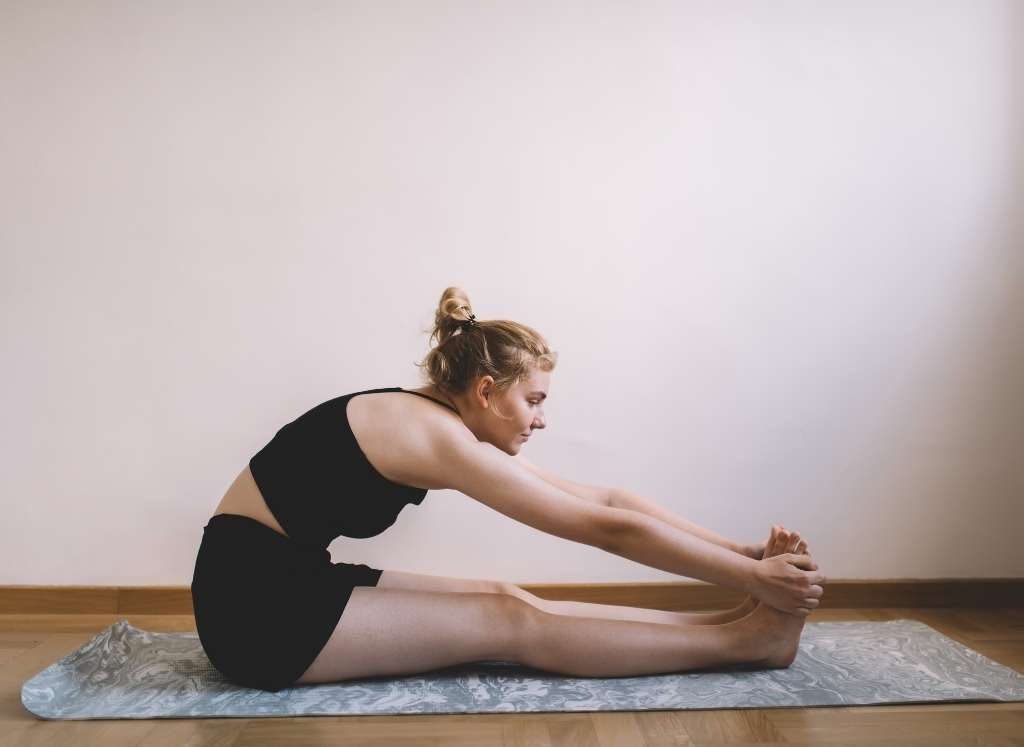Tadagi Mudra, also known as the “Pond Gesture” or “Vatara Mudra,” is a subtle yet powerful yogic practice primarily used in Hatha Yoga and Kriya Yoga traditions. The term “Tadagi” is derived from the Sanskrit word tadaga, meaning “pond” or “reservoir,” symbolizing the hollowing of the abdomen resembling the shape of a pond.
Table of Contents
Steps To Do Tadagi Mudra:
Tadagi Mudra is typically performed in a seated or supine position. It involves forcefully drawing the abdominal wall inward and upward after exhalation, similar to Uddiyana Bandha (abdominal lock), but often held in a more meditative, sustained way.
Practice on an empty stomach, ideally in the morning. Choose a quiet space with good ventilation. Warm up with light yoga postures or preparatory breathing (like Kapalabhati or deep diaphragmatic breathing).
Step 1:
Sit in a meditative posture (Padmasana, Siddhasana, or Vajrasana), or lie down in Supta Tadasana (reclining position with arms overhead and legs straight). Keep your spine straight and chest lifted.
Step 2:
Inhale deeply through the nose. Exhale completely, emptying your lungs. After exhalation, hold the breath out (Bahya Kumbhaka).
Step 3:
Contract and pull the abdominal muscles in and up, toward the spine and under the ribcage, creating a hollow, pond-like shape in the belly.
Step 4:
Hold the mudra for as long as comfortable without inhaling. Release gently, inhale slowly, and return to a relaxed posture. Rest and breathe normally before repeating.
Benefits:
Here are the key benefits of Tadagi Mudra:
Strengthens the Core:
Tones the abdominal muscles and helps build core stability.
Improves Digestion:
Massages internal organs like the stomach, intestines, and liver, boosting digestive fire (agni).
Enhances Organ Function:
Stimulates better circulation and functioning of abdominal organs.
Supports Detoxification:
Helps flush out toxins by stimulating lymphatic drainage and promoting bowel movement.
Improves Posture:
Encourages proper spinal alignment and awareness of the torso.
Activates Manipura Chakra (Solar Plexus):
This chakra governs personal power, will, and transformation. Tadagi Mudra energizes and balances it.
Enhances Pranic Flow:
Creates a vacuum-like effect in the abdomen, encouraging prana (vital life force) to rise upward.
Deepens Breath Control:
Prepares the body for advanced pranayama by improving breath-holding capacity and control.
Calms the Mind:
When practiced meditatively, it helps reduce stress and induces a focused, inward state.
Aids in Spiritual Progress:
By harmonizing the physical and energetic bodies, it supports deeper states of meditation and inner awareness.
Precautions:
Tadagi Mudra should be practiced on an empty stomach, under the guidance of an experienced teacher, especially for beginners. People with high blood pressure, heart conditions, or abdominal issues should avoid this practice.
Conclusion:
While Tadagi Mudra may appear simple, it is a profound practice that integrates physical control with subtle energetic awareness. When done mindfully, it prepares the practitioner for deeper yogic states and enhances the body’s vitality from the core.
FAQ:
Q. What is Tadagi Mudra?
A. Tadagi Mudra is a yogic gesture where the abdominal wall is drawn inward and upward after exhalation, creating a hollow shape like a pond (tadaga). It is used to activate core energy, strengthen abdominal muscles, and enhance pranic flow.
Q. How is it different from Uddiyana Bandha?
A. While both involve abdominal contraction after exhalation, Uddiyana Bandha is a lock (bandha) used in dynamic kriyas or breath control, whereas Tadagi Mudra is typically held statically with more focus on the meditative and energetic aspect of the abdominal hollowing.
Q. When should I practice Tadagi Mudra?
A. Practice on an empty stomach, ideally in the morning or before meditation/pranayama. It’s best done after asanas and before pranayama or dhyana (meditation).
Q. Can beginners practice Tadagi Mudra?
A. Yes, but it should be learned under the guidance of a qualified yoga teacher. Proper technique and breath awareness are essential to avoid strain.
Q. What are the health benefits?
A. Benefits include:
- Strengthening core and abdominal muscles
- Improving digestion
- Stimulating the Manipura Chakra
- Enhancing energy control (pranayama)
- Supporting detoxification
Q. Are there any precautions?
A. Yes. Avoid Tadagi Mudra if you have:
- High blood pressure
- Heart disease
- Hernia or recent abdominal surgery
- Pregnancy
Always consult a yoga expert or a physician if you are unsure.
Q. Is Tadagi Mudra a breathing technique?
A. Not exactly. It’s more of a physical-energetic gesture used in conjunction with breath retention (kumbhaka), particularly after exhalation (rechaka).





